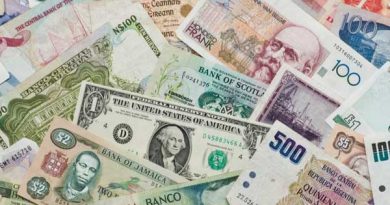Using Value Stream Maps to Improve User Experience
Designing in its holistic approach is a method for solving problems through creativity and innovation by designing a better product or service experience. In-depth research and exploration for the end user should be conducted at an early stage of the design process in order to understand how consumers use the product or service and what problems are faced during this experience. This leads to empathic design, as described by Tim Brown in his book, “Change By Design”: “The mental habit that moves us beyond thinking of people as laboratory rats or standard deviations.”
The Value Stream Map was initially presented as a method for understanding the flow of a specific process by drawing a flow chart of the different steps and noting the valuable and non-valuable experiences faced in each step of the process in order to improve the current process in the future. As mentioned, the Value Stream Map tends to differentiate between two types of experiences in the process:
- Valuable: Refers to the function that adds value to the product or service. The map aims to increase valuable steps to cover the whole process of the user experience.
- Non-valuable: Refers to the barriers or problems the consumer faces while using a specific product or service. This could be a delay in time while using the service, difficulties navigating the product’s user interface, or a product design problem that prevents the consumer from using it smoothly and easily.
The Value Stream Map can be implemented on a wide range of daily life activities in order to identify the parts that should be improved upon in the process. For example, below are simple steps to track the user experience flow of using a specific ecommerce website:
- Open the website on the computer browser
- Wait for the page to load
- Search for a specific product
- Try to find the best deals for the product
- Proceed to payment
- Accept terms and conditions
- Review the shopping cart
- Choose a shipping option
- Add payment information
The above process has both valuable and non-valuable functions. For example, while opening the website is a valuable step to accessing the service, waiting for the page to load is a barrier because the user may leave the website for other competitors whose websites load faster. Also, searching for the best deals is considered a non-valuable step because users need to see different deals related to specific products on the same page, along with the product, without needing to search for it along the web pages.

How to apply Value Stream Map in Design
The Value Stream Map contributes to building a better understanding of how users interact with the product or service design. Therefore, it can be implicated in the early stages of ideation and exploration in the design process. Using this map, designers are able to understand consumers through the following steps:
- Observe and map the whole consumer experience and capture all the possible activities during this process flow. This includes the duration of each part, such as waiting time or product assembly time. Visualize the information using a flow chart or draft drawing that indicates the different user experience steps.
- Add information and notes about the user experience on the map to help understand the experience and whether it is adding value to the design or not.
- Categorize the different experience steps as either valuable or non-valuable from the user experience perspective. In the above example, loading time, searching for other deals, and accepting terms and conditions are considered non-valuable experiences for the end user.
- Create a timeline that identifies the length of each step and how the steps interfere with each other. This will give a better picture of how the valuable and non-valuable steps are organized during the user experience.
- Calculate the non-value time to identify the weak points in the process and work to fix it in the iteration process.
- Analyze the causes of the non-value time during the user experience and ask questions such as, “Why is the loading time like this?” or “How can we redesign the website for a better user experience?”
- Define solutions to reduce the non-valuable time and effort and formulate it in an action plan that includes information about the time, budget, and team dedication required to solve these problems.
How IKEA products apply the Value Stream Map concept
In the previous article, we explored the design in IKEA and how it applies the self-assembly and flat-packing strategy to contribute to sustainability and reduce product price. In this example, let us explore briefly how flat-packing and self-assembly are considered an implementation of the Value Stream Map:
Before applying the two related strategies, consumers had to buy IKEA products at a high price due to the transportation costs of getting the products from the warehouses and factories to retail shops and showrooms. Also, consumers had to find large transportation vehicles to deliver their products to their homes.
While the unique design of IKEA products was considered a value for the consumer, the high price and transportation fees were considered non-value factors in the process. It is also a cause for delay when sending products from warehouses to shops and another delay when sending products to the consumer’s home.
While the size of the products is the main cause for this delay, IKEA turned to flat-packing. That way, consumers can grab the products in separate parts that are packed to reduce transportation costs. Flat-packing has allowed consumers to directly take products to their homes in their own cars and assemble them using easy-to-follow manuals.

Designers should put themselves in the consumer’s shoes in order to understand their experience and build a design for a service or product that fulfills their needs and solves their problems. However, proper tools should be used to formulate the designers’ observations and experiences into measurable data that can be used in a further action plan. The Value Stream Map is one of the tools that can be used to understand the process and convert data into timelines that include both valuable and non-valuable parts of the process and identify the time spent on both parts. Based on the analyzed data, an action plan should be put together, including information on how to improve the process such as budget, time, and team dedication.






